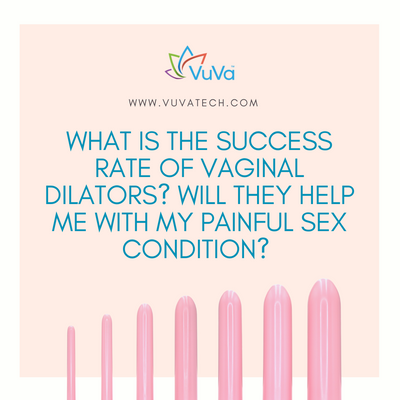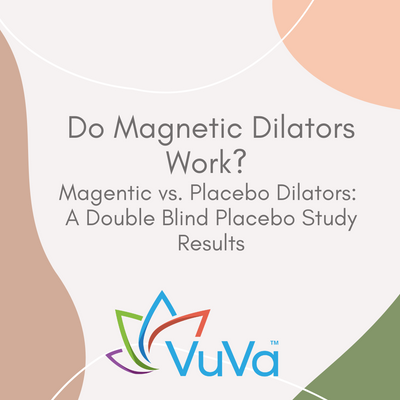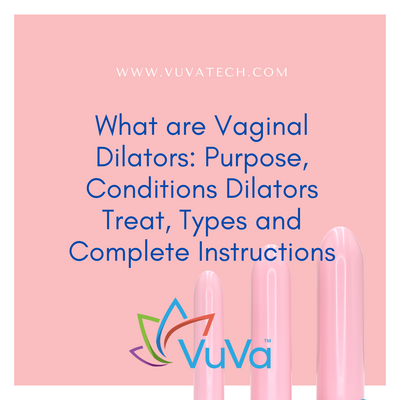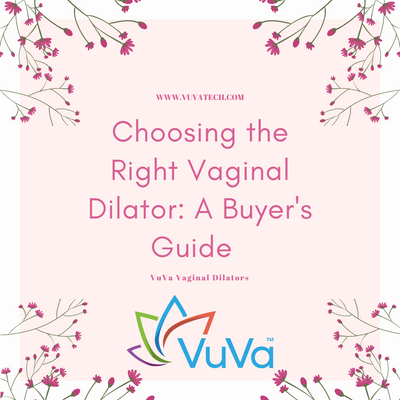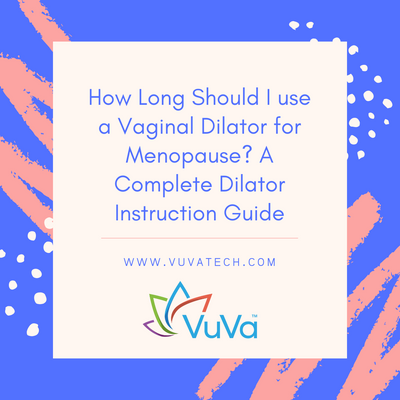
| Tara Langdale
Can You Reverse Vaginal Atrophy?
By their forties, many women have heard about the trials and tribulations of other women approaching their fifties and beyond. The hormonal changes we are all apt to experience (to varying degrees) can be foreboding. The menopause threatens to bring about various changes, many of which also constitute challenges. One common problem affecting over half of all menopausal women is atrophic vaginitis (otherwise known as vaginal atrophy). Once this condition sets in, it’s inevitable that women ask, can you reverse vaginal atrophy?
Dryness, itching, burning sensations, tightness and painful sex; these are all unpleasant symptoms of vaginal atrophy, a genitourinary syndrome of menopause (GSM). Until the peri-menopause, we may be very much accustomed to our reproductive organs functioning reliably. Yet after this time, things get less reliable - even downright troublesome.
If you’re looking for ways to reverse vaginal atrophy, we are here to help. We get asked about this condition a lot, but one of the most common inquiries is about how to reverse atrophic vaginitis symptoms. Our article will shed light on this common condition, as well your options, which also include atrophic vaginitis natural treatment (for those who don’t want to use pharmaceuticals).
Do I have vaginal atrophy?
If you have gone through the menopause and have noticed uncomfortable vaginal changes, you could be suffering from vaginal atrophy. Even if you’re not of menopausal age, if you have had breast cancer treatment, this could bring on the menopause and all of the hormonal changes that cause atrophic vaginitis. The condition can take hold once your estrogen levels drop below a certain level, and the symptoms usually include:
- Vaginal dryness
- Irritation of the vulva and surrounding skin
- Pruritus (itchy skin)
- Burning and soreness caused by inflammation
- Vaginal discharge
- Thinning of the vaginal skin, tissues and walls
- Vaginal stenosis (shortening and tightening of the birth canal)
- Urinary incontinence
- Painful when urinating
- Urinary tract infections (UTIs)
- Painful sex (dyspareunia)
- Spotting or bleeding after sex
Although some of these symptoms can be caused by other genitourinary conditions, if you’re menopausal or had radiotherapy and recognize more than one or two of these symptoms, it is most likely to be vaginal atrophy.
Can vaginal atrophy be reversed?
If you think you have atrophic vaginitis, you will surely want to an answer to this important question: Can you reverse vaginal atrophy?
Is there really a light at the end of the tunnel for this one? Well, although technically it can’t be completely reversed, it is certainly possibly to get long-term relief from atrophic vaginitis symptoms and prevent the problem from worsening.
How can I reverse vaginal atrophy symptoms?
There are several ways to reverse vaginal atrophy symptoms so that your vaginal functionality returns to a more comfortable place. Will you be able to get rid of all vaginal atrophy symptoms completely? Probably not, but you are likely to see a marked improvement with the right treatment protocols.
One of the most common vaginal atrophy treatments is estrogen replacement, although it is not for everyone and can pose some risks. It is possible to use bioidentical estrogen products, which are formulated from natural products. They are generally considered less risky than standard prescribed HRT. Another extremely popular atrophic vaginitis natural treatment is the vaginal dilator, which helps to restore capacity and functionality.
If I do not want to take estrogen, what else can I take or use?
Many of our customers, as well as myself love the company Neueve. NeuEve suppositories and cream help ease menopausal discomforts: vaginal odor, dryness, atrophy, itching, burning, painful sex and bacterial vaginosis. They use 100% all-natural food grade ingredients.
What are the best atrophic vaginitis treatments?
Hormone replacement products
Estrogen products can bring about positive changes in the vaginal pH and the skin thickness. However, they don’t always reduce other vaginal atrophy symptoms significantly. Estrogen replacement may come in the form of tablets, vaginal creams and inserts.
In 2013, a pill called Osphena was developed to combat severe dyspareunia and vaginal dryness. As an estrogen agonist/antagonist, it acts similarly to estrogen in the body, and its effectiveness was confirmed by a 2019 study.
Another commonly prescribed vaginal atrophy treatment is Prasterone vaginal inserts, which contain the hormone DHEA. DHEA can encourage the production of estrogen. Like the Osphena oral pill, these inserts may help with dyspareunia and raise moisture levels in the vaginal moisture.
However, synthetic estrogen therapies have been linked to occurrences of breast cancer in post-menopausal women, so estrogen therapy should be carefully supervised by a qualified practitioner.
Bioidentical hormone replacement products
Among the natural treatments for atrophic vaginitis are bioidentical hormone replacement products, which can help with everything from vaginal dryness to dyspareunia and UTIs. There is debate around whether bioidentical hormones are more effective than synthetic, and many advocates in the field of natural medicine. According to one Pubmed study of papers on this topic:
“Patients report greater satisfaction with HRTs that contain progesterone compared with those that contain a synthetic progestin. Bioidentical hormones have some distinctly different, potentially opposite, physiological effects compared with their synthetic counterparts, which have different chemical structures. Both physiological and clinical data have indicated that progesterone is associated with a diminished risk for breast cancer, compared with the increased risk associated with synthetic progestins. Estriol has some unique physiological effects, which differentiate it from estradiol, estrone, and CEE. Estriol would be expected to carry less risk for breast cancer, although no randomized controlled trials have been documented.”
Bioidentical estradiol, which is often recommended to treat vaginal atrophy, is available at pharmacies in the form of vaginal cream (Estrace), vaginal tablets (Vagifem), or insertable vaginal rings (Estring). Estriol is seen as one of the most beneficial estrogens for the cervix, vulvar tissues and lining of the vagina. Estriol vaginal creams and gels can only be found in compounding pharmacies. There are also many brands of bioidentical estrogen creams available without prescription, but you should always research new products carefully before use.
Vaginal Moisturizers
One way of restoring diminished vaginal moisture levels is to apply vaginal moisturizers regularly. Among the best options are our natural and water-based lubricants, and clinically proven vaginal moisturizer Replens. Both can bring relief from vaginal dryness, and although they won’t reverse atrophic vaginitis, they really help make sex more comfortable. We highly recommend using lubricant with vaginal dilators if you have vaginal atrophy, to prevent irritation and tearing of the delicate skin.
Vaginal Dilators
One of the best vaginal atrophy treatments is vaginal dilators, which can widen your vaginal capacity again when it shrinks through vaginal stenosis. They also encourage bloodflow to the tissues, revitalising them and creating more elasticity and flexibility. Although dilators don’t reverse vaginal atrophy, with continual use they can help to restore functional capacity. Women suffering from dyspareunia tend to benefit from using vaginal dilators. They are often able to resume a normal sex life.
Our Neodymium magnetic dilators are by far the best dilators for vaginal atrophy, since the many magnets within them pulls more blood in the direction of the delicate vaginal tissues, with many regenerative benefits.

Likewise, having sex as regularly as you can, if it’s an option for you (and not painful), can help to retain vaginal capacity and functionality.
Laser therapy
Laser therapy is another new natural vaginal atrophy treatment. Just as it can with facial skin, laser therapy treats the vaginal area by removing old skin and collagen. This allows new skin to grow. However, the true efficacy will only be fully determined once more clinical studies have been conducted, so this treatment cannot be touted as a way to reverse vaginal atrophy.
To conclude, although it isn’t possible to reverse vaginal atrophy, there are plenty of options to help you maintain quality of life through symptom management. There are lots of options you can try, including many atrophic vaginitis natural treatments that won’t bring other risks for you to worry about.
Resources
Vuvatech.com/blogs/vuvagirlblog/atrophic-vaginitis-is-a-reality-for-breast-cancer-survivors
Womenshealthnetwork.com/hrt/bio-hrt-for-vaginal-dryness/
Vaginal estrogen therapy for the treatment of atrophic vaginitis: Pubmed.ncbi.nlm.nih.gov/19788364/
Vuvatech.com/blogs/care/using-vaginal-dilators-for-vaginal-atrophy
VuVa Helpful Links:
How do Neodymium Vaginal Dilators work?
7 Reasons for a Tight Vagina and How to Loosen
How to Relax Vaginal Muscles, Vaginismus & Sex
Vaginal Stretching - Keeping in Shape with Dilators
Do Dilators Really Work? Yes, and They can Improve Your Sex Life!


